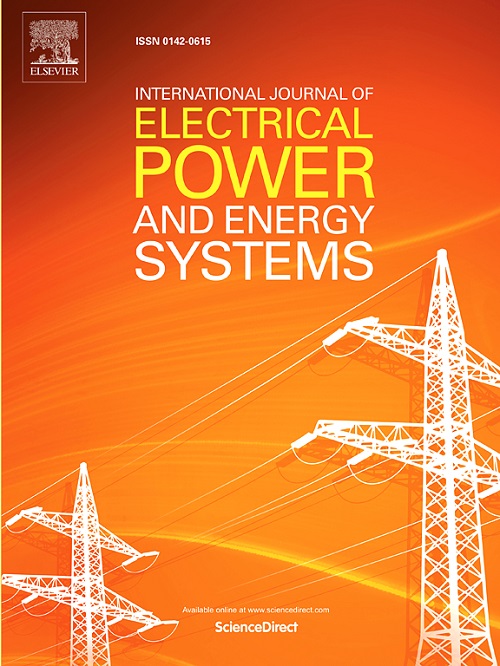Data-driven continuous-time framework for frequency-constrained unit commitment
IF 5
2区 工程技术
Q1 ENGINEERING, ELECTRICAL & ELECTRONIC
International Journal of Electrical Power & Energy Systems
Pub Date : 2024-11-01
DOI:10.1016/j.ijepes.2024.110327
引用次数: 0
Abstract
The conventional approach to solving the unit commitment problem involves discrete intervals at an hourly scale, particularly when integrating frequency dynamics to formulate a frequency-constrained unit commitment. To overcome this limitation, a novel continuous-time frequency-constrained unit commitment framework is proposed in this paper. In this approach, Bernstein polynomials represent continuous variables in the unit commitment problem and enable the calculation of frequency response-related metrics such as the rate of change of frequency, quasi-steady-state frequency, and frequency nadir, and the corresponding continuous-time constraints are introduced. Notably, startup and shut-down trajectories are meticulously considered, transforming the formulation into a fully continuous-time model and simplifying constraints related to variable continuity. To address the complexities associated with integrating the obtained non-linear frequency nadir constraint into a mixed-integer linear problem, an alternative data-driven frequency nadir constraint is proposed, which accurately constrains frequency nadir deviations throughout the time interval. To validate the proposed model, it is applied to the real-life network of the Spanish Island of La Palma. The data-driven method for estimating frequency nadir has demonstrated a minimum accuracy of 99.61% and has consistently maintained the frequency above the defined threshold.
频率受限机组承诺的数据驱动连续时间框架
解决机组承诺问题的传统方法涉及以小时为单位的离散区间,特别是在整合频率动态以制定频率受限机组承诺时。为克服这一局限性,本文提出了一种新颖的连续时间频率受限机组承诺框架。在这种方法中,伯恩斯坦多项式代表了机组承诺问题中的连续变量,能够计算频率响应相关指标,如频率变化率、准稳态频率和频率低点,并引入了相应的连续时间约束。值得注意的是,对启动和关闭轨迹进行了细致考虑,将公式转化为完全连续时间模型,并简化了与变量连续性相关的约束条件。为了解决将所获得的非线性频率底点约束整合到混合整数线性问题中的复杂性,提出了另一种数据驱动的频率底点约束,它能在整个时间间隔内精确地约束频率底点偏差。为了验证所提出的模型,我们将其应用于西班牙拉帕尔马岛的实际网络。数据驱动的频率下限估算方法的最低准确率为 99.61%,并始终保持频率高于定义的阈值。
本文章由计算机程序翻译,如有差异,请以英文原文为准。
求助全文
约1分钟内获得全文
求助全文
来源期刊
CiteScore
12.10
自引率
17.30%
发文量
1022
审稿时长
51 days
期刊介绍:
The journal covers theoretical developments in electrical power and energy systems and their applications. The coverage embraces: generation and network planning; reliability; long and short term operation; expert systems; neural networks; object oriented systems; system control centres; database and information systems; stock and parameter estimation; system security and adequacy; network theory, modelling and computation; small and large system dynamics; dynamic model identification; on-line control including load and switching control; protection; distribution systems; energy economics; impact of non-conventional systems; and man-machine interfaces.
As well as original research papers, the journal publishes short contributions, book reviews and conference reports. All papers are peer-reviewed by at least two referees.

 求助内容:
求助内容: 应助结果提醒方式:
应助结果提醒方式:


